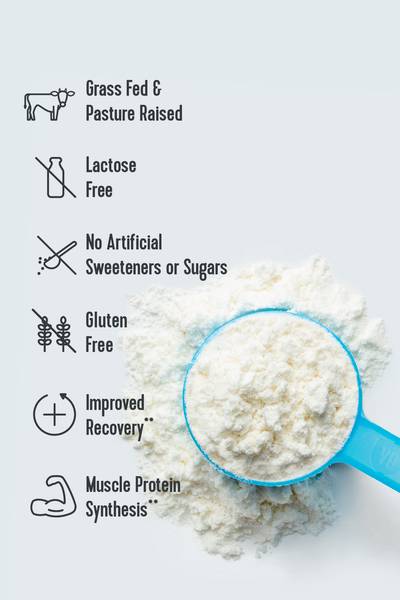Whether you're looking to get stronger or faster (a strong upper body can help you run strong, too) or want to crush your competitors in the next arm-wrestling contest, biceps bulking season is year-round. The biceps are an important muscle, after all — tasked with flexion of the elbow and rotation of the forearm.
To help you reach your goals, we tapped several fitness experts to get their insights on everything you need to know about your biceps workout, plus an exclusive workout that will help you get stronger.
What is the best exercise to build biceps?
Start with a power-packed combo of isolated bicep exercises and back exercises, says Daniel Sullivan, certified personal trainer, nutrition coach and Founder of The Diesel Physique.
Is 3 exercises for biceps enough?
There are three great exercises you should include in your biceps workout: the reverse barbell curl, preacher curl and cable curls with lat pulldown. Sergio Pedemonte, a certified personal trainer & CEO of Your House Fitness, adds that biceps curls and hammer curls (some of the best biceps exercises you can do with dumbbells) and chin-ups can help.
He recommends doing the compound movements (exercises that work multiple muscle groups at the same time) first and then performing isolation exercises to maximize your biceps workout. According to Pedemonte, an example of a biceps (and back) workout would be:
- Pull-Up (Compound)
- Cable Row (Compound)
- Biceps Curl (Isolation)
- Preacher Curl (Isolation)
Of course, exercises are only half the battle. To increase muscle mass, Sullivan says you'll also need to focus on time under tension and squeezing the muscle as much as you can at the top of the movement. "Just maintaining your focus on that squeeze at the top will increase your muscle development by more than half," Sullivan says.
Related Articles
Is it OK to work your biceps every day?
Even if you're mega-devoted to arm day, you still need to give your biceps a rest. This is key to muscle growth, says David Rosales, head trainer at Roman Fitness Systems.
"In order for a muscle to grow, you need to give it time so the body can recover from the micro-trauma endured." Sullivan agrees, adding that "the more rest you take after a bicep workout, the better they'll recover and develop over time."
If you're tempted to break the rules and work out your biceps every day, just remember: Gains happen in recovery. A good sweet spot is at least three times per week or every other day (i.e. a schedule of Monday, Wednesday and Friday), which gives your body time to recover, according to Pedemonte.

How can I get huge biceps?
While getting huge biceps might seem appealing, aesthetics shouldn’t necessarily be your main goal. One way to beef up those muscles is through eccentric exercises (or negative exercises). "
When the muscles lengthen while remaining engaged, a biceps curl when it's lowered back to the starting position is considered eccentric," Pedemonte tells Lively. "Performing tempo changes on eccentric exercise will stimulate muscle growth in the bicep muscles."
When it comes to how many repetitions you should be doing, Erica Marie, fitness trainer and athletic brand director, says to perform 4-6 reps with a moderately heavy and challenging weight.
Rosales agrees, adding that you want to progressively add weight and reps once you have the movements down. "Keep it simple," he says.
In addition to exercise and rest, Sullivan says that building strong biceps also requires a focus on nutrition. Support your muscle protein synthesis and combat muscle soreness** with Vital Performance™ RECOVER. The combination of collagen and BCAA help your muscles recover after a tough workout.
Try this exclusive biceps workout created by Pedemonte
Circuit 1
Complete 4 Sets of 5-12 reps, resting for 30 to 60 seconds between exercises
Pull-Up
Start with hands on the bar approximately shoulder-width apart and palms facing forward. With arms extended above you, stick your chest out and curve your back slightly. Breathe in and bend elbows to pull yourself up toward the bar using your back. Pull yourself up as far as you can, ideally until the bar is at chest-level. Slowly lower yourself to your starting position while breathing in.
Chin-Up
Start with hands on the bar approximately shoulder-width apart and palms facing in. With arms extended above you, stick your chest out and curve your back slightly. Breathe in and bend elbows to pull yourself up toward the bar using your back. Pull yourself up as far as you can, ideally until the bar is at chest-level. Slowly lower yourself to your starting position while breathing in.
Lat Pulldown
Start seated on bench, grab handle (overhand or underhand grip), hands placed at or around shoulder-width. Think big chest and shoulders back, scapula should be set back and locked in place. Brace core, deep breath and initiate pull from the scapula and think of a string pulling your elbows down and slightly backward. Lower bar to around chin level (or where your mobility allows). Squeeze shoulder blades together at bottom of lift. Return to start.
Circuit 2
Complete 4 sets of 10-20 reps, resting for 30 to 60 seconds between exercises
Biceps Curl
Stand with feet hips-width apart and one dumbbell in each hand. Keeping elbows close to sides, curl weights up to shoulder level.
Preacher Curl















